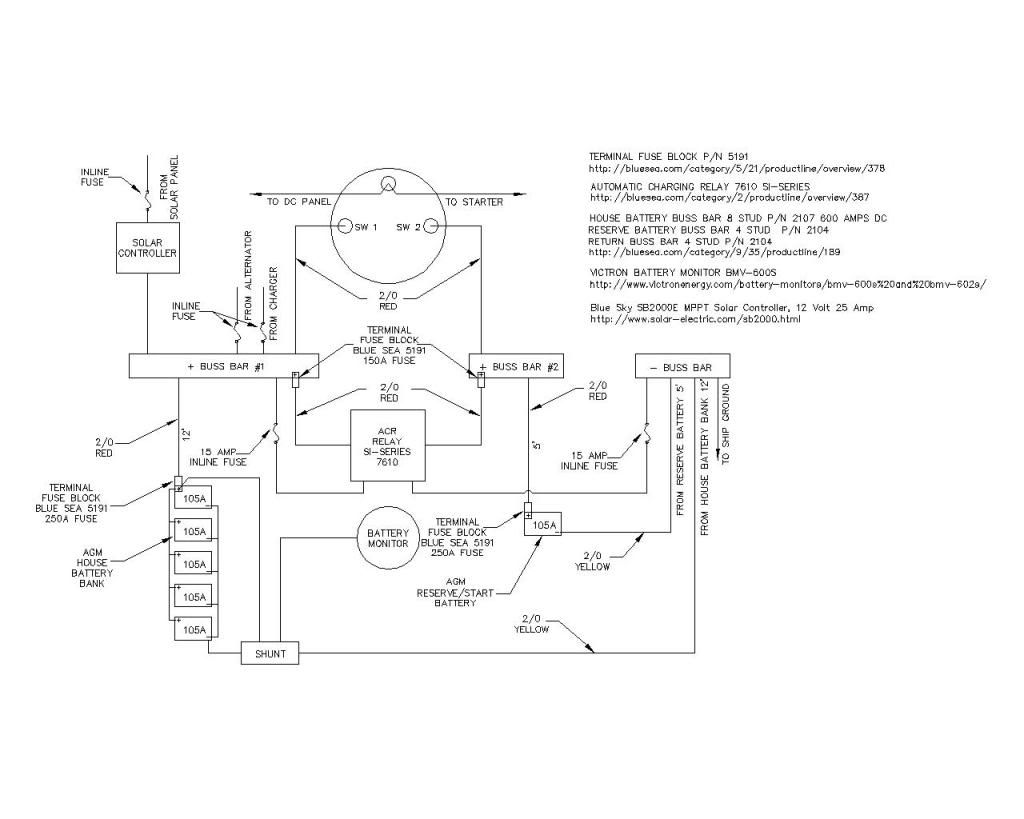Hi Folks,
I am new to this site and have been following this and other threads for some time. I am the new owner of a 1984 Catalina 27 with a Universal M-18 inboard diesel. I find myself in the same situation as many used boat owners. The marine insurance survey I purchased identified several electrical and battery issues, so I want to straighten these out before I hit Chesapeake Bay this spring. I plan to use a similar design as that provided by CTJ1950. Thank you for providing this, and thanks to all the folks that provided great comments in this thread (Stu Jackson, Maine Sail, mitiempo and all others).
I have already been crawling around my boat and have identified that the output of the alternator goes to the dreaded orange wire #4 in the wiring harness. I will make the necessary modification to that wire and take the alternator output off the ammeter and 1/2/Both/Off switch and land it to a new positive busbar from the house bank. My existing batteries are apparently pretty much gone too, so I am considering two flooded golf cart batteries wired in series for 225AH 12v on the house bank. I will purchase a single 12 flooded battery for the reserve. My boat currently has a 1.5 amp float charger. I believe that is inadequate to achieving good battery life, so I plan to replace that with an IOTA DLS-30 with the integral smart charger. Other than that I will pretty use the plan provided by CTJ1950.
That said, I do have several questions with the design. If someone could provide answers I'd be very thankful.
1) Battery disconnect switches - on/off. I was told by the Marine Surveyor I hired that these were required by code (ABYC?). They are not in the design. I plan on using Blue Sea systems on/off micro switch on each bank. Comments?
2) Busbar sizing - The subject design contains 600 amp continuous rating busbar. I am thinking that this is overkill for my Universal M-18 diesel, original alternator (51 amp?), SI-ACR and IOTA 30 amp battery charger. I have viewed the starting current videos provided by Maine Sail on a separate thread (thank you), and have come to the conclusion that perhaps using 250 amp busbar might be better in my application? Comments?
3) Fusing the wiring to the 1/2/both/off switch. I notice that in the provided diagram these wires are not fused. Do they require fuses?
Well, thats alot of questions, and I may have more. Your answers and thoughts should provide me with what I need to get started. Thanks to all in advance for your help.
Sincerely,
Boomer
Catalina 27 #5688







